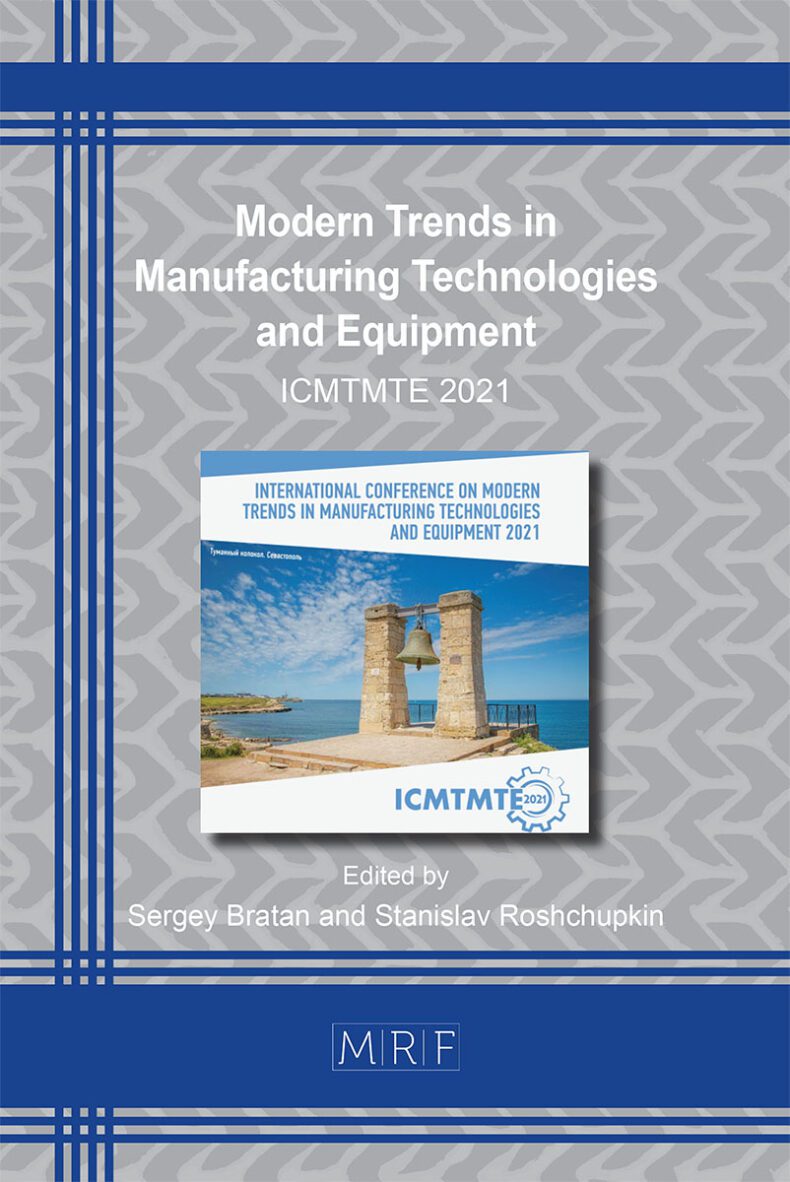Automatic Registration of the Nascence and Propagation of Cracks in Electrically Conductive Materials
Vyacheslav M. Kiiko, Kirill A. Khvostunkov, Konstantin A. Fedotov
download PDFAbstract. A correlation is established between the length of the propagating crack in electrically conductive flat specimens and the change in the field of electric potentials over the surface of the specimen when an electric current is passed through it. The experimental data correspond to the analytical solution in a two-dimensional formulation obtained by means of a conformal mapping. Work can be attributed to the field of converting mechanical values into electrical ones. This transformation simplifies the process of recording mechanical processes and provides a convenient form of their control. The work is aimed at automatic control of the process of fracture of electrically conductive materials.
Keywords
Electrically Conductive Specimen, Equipotential Lines, Crack, Conformal Mapping, Automatic Fracture Control
Published online 1/5/2022, 7 pages
Copyright © 2022 by the author(s)
Published under license by Materials Research Forum LLC., Millersville PA, USA
Citation: Vyacheslav M. Kiiko, Kirill A. Khvostunkov, Konstantin A. Fedotov, Automatic Registration of the Nascence and Propagation of Cracks in Electrically Conductive Materials, Materials Research Proceedings, Vol. 21, pp 403-409, 2022
DOI: https://doi.org/10.21741/9781644901755-68
The article was published as article 68 of the book Modern Trends in Manufacturing Technologies and Equipment
![]() Content from this work may be used under the terms of the Creative Commons Attribution 3.0 licence. Any further distribution of this work must maintain attribution to the author(s) and the title of the work, journal citation and DOI.
Content from this work may be used under the terms of the Creative Commons Attribution 3.0 licence. Any further distribution of this work must maintain attribution to the author(s) and the title of the work, journal citation and DOI.
References
[1] Ni Qing-Qing, J. Hong, P. Xu, Xu Zhenzhen, K.A. Khvostunkov, H. Xia, Damage detection of CFRP composites by electromagnetic wave nondestructive testing (EMW-NDT), J.Composites Science and Technology. 211 (2021) 108839. https://doi.org/10.1016/j.compscitech.2021.108839
[2] V.M. Kiiko, K.A. Khvostunkov, R.K. Odzhaev, D.G. Pizhenin, S.A. Abashkin, Automatic registration of the length of the propagating crack in conductive materials, in V.V. Rubanik (Ed.), Actual problems of strength, Publishing “Pobeda”, Molodechno, 2020, pp. 251-253. (in Russian).
[3] F.R. Sosnin, K.V.Podmasterev,Unbrakable control, Moscow, 2004. (in Russian)
[4] P.N. Shkatov, P.I. Chernenko, Measurement of the depth and angle of inclination of surface cracks using the electropotentialmethod, Vestnik MGUPI, 44 (2013). (in Russian)
[5] L.N. Litvinov, F.G.Tsipushtanov, V.A. Parkov, V.N. Bakumov,Electropotential Crack Depth Gauge, Patent RF, 1408205 (1988). (in Russian)
[6] D.A.Ozetskiy, V.V. Tsvelev, Method for measuring crack propagation in conductive specimens, Patent RF, 1834491 (1966). (in Russian)
[7] M.A. Lavrentiev, B.V. Shabat, Methods of the theory of functions of a complex variable, Moscow, 2002. (in Russian)
[8] Y.V. Sidorov, M.V. Fedoryuk, M.I. Shabunin, Lectures on the theory of functions of a complex variable, Moscow, 1989. (in Russian)































